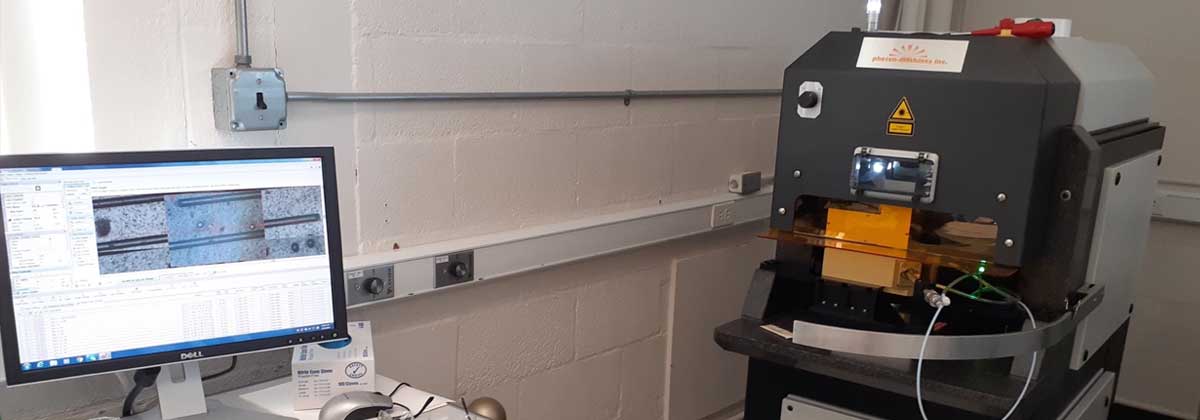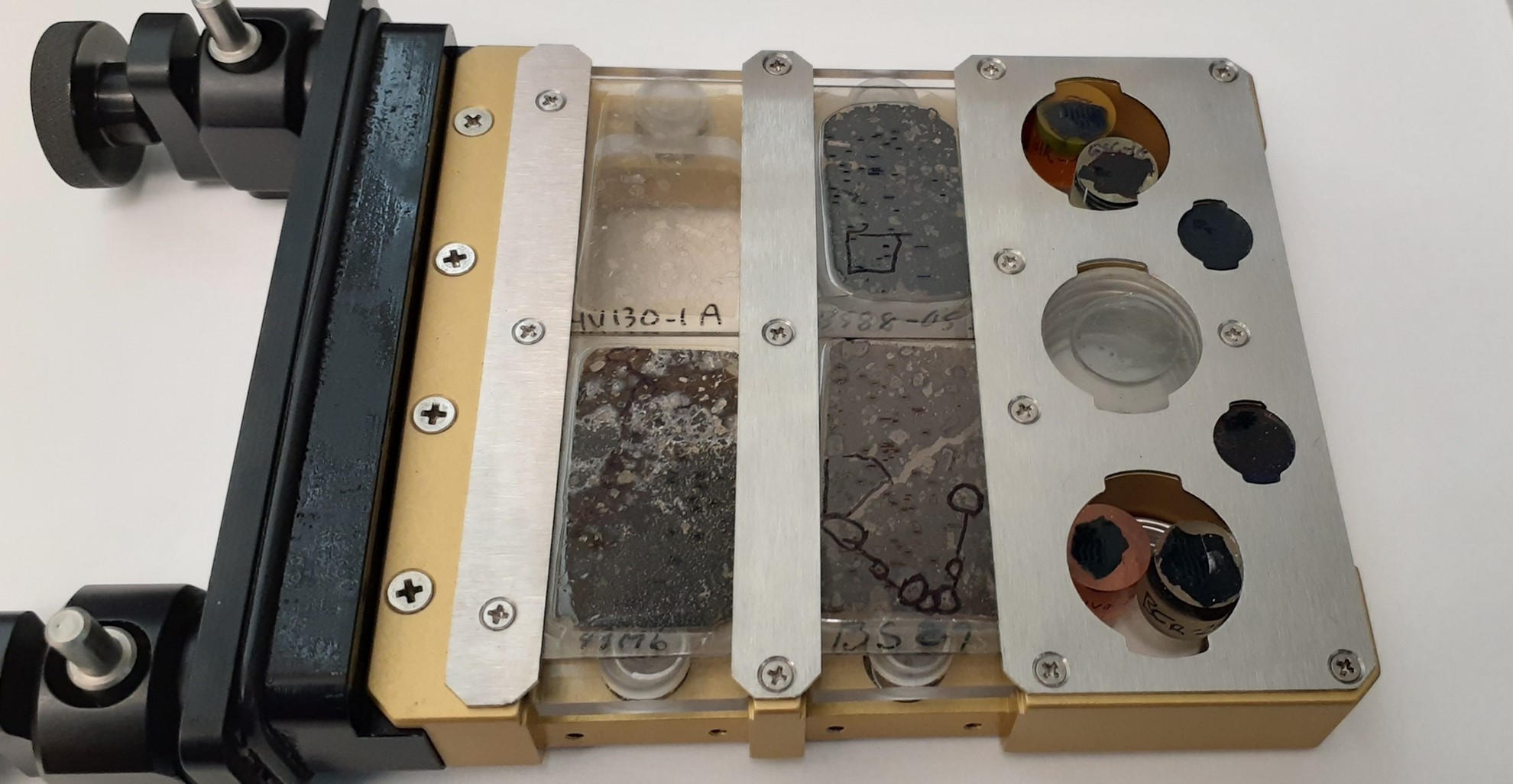- Earth, Atmosphere and Environment
- Research
- Laboratories
- Micro-Compositional Analysis Laboratory
- Laser-ablation system

Laser-ablation system for LA-ICP-MS (Teledyne-Photon Machines Analyte G2)
Description
The laser ablation system is a micro-sample introduction device used in tandem with ICP-MS, here, the Element 2 sector field ICP-MS, for major and trace element analyses of solids and glasses. In our system, a 193-nm UV laser beam is generated by an ArF excimer gas, for optimal and consistent performance across materials. The ablation system is equipped with a transmitted- and reflected-light optical microscopy camera, which helps the user navigate their samples and program their ablations ahead of analysis. Once the sample ablation sequence is set, the laser will remotely control the ICP-MS, syncing data acquisition with ablations.
Below are the general sample requirements. If your samples do not meet these requirements, please contact us.
Thin sections: Polished sections are preferred for best pre-ablation sample observations, but working with unpolished sections will not alter the quality of the ablation. Regular petrographic thin sections (30 mm) are acceptable, but their thinness may limit the ablation duration and impact data quality. Thicker sections are preferred. Surface scans such as line or raster are also possible as an alternative to spots and yield better results on homogeneous samples. Ablation spot size can vary from 110-µm diameter to 5-µm, but the signal intensity is directly proportional to the sample area, and data quality and detection limits will substantially degrade for small sample sizes. Thirty micrometers or larger are generally preferred.
Grain mounts in epoxy: 1-inch or 1-cm mounts must be thinner than 1.5 cm to fit on the sample tray. As with thin sections, the better the polishing, the better the imaging for the user. The microscope’s reflected-light capability allows for thick and opaque polished samples to be examined carefully before ablation.
Custom sizes may be accepted if they can be mounted on our sample tray, with minimum and maximum size requirements.


The two-volume sample cell is fluxed with high-purity helium, and the ablated material is conveyed to the ICP-MS in the helium flux, where it is mixed with argon and ionized as plasma before elemental analysis.
As with solution-mode ICP-MS, the user can select as many elements as they need for analysis by ICP-MS.
We provide calibration standards comprising the best-characterized reference materials for LA-ICP-MS (silicate glasses, synthetic and natural), and also welcome users’ standard reference materials, especially for matrices for which no broadly available standards exist.
All major and trace element analyses are run against calibration standards (external calibration method). Analyses of standards run as unknown (secondary standards) are also provided. Blanks are subtracted from each analysis and, whenever possible, we perform a pre-ablation to eliminate potential surface contamination of the samples. See an example of an LA-ICP-MS signal below.
Example of Data

Contact and Pricing
We offer bulk analyses of powdered samples, which we charge per sample using slightly higher rates than we do for solution work by ICP-MS, to reflect lower sample throughput and higher instrumentation use.
| Description | NIU | Academic | Commercial |
|---|---|---|---|
|
Instrument use* |
$30-100 |
$40-120 |
$60-200 |
|
Technician time** |
N/A |
N/A |
$100 |
|
Minimum fee for new project*** |
$300 |
||
For all other projects, charges are assessed per hour of instrument use. Users should discuss their projects to estimate the time required. The most time-consuming part of LA-ICP-MS often involves setting up ablations on the samples, which are to be budgeted in the instrument use time. It is preferred that users set up their ablations (first assisted by a technician, or autonomously after adequate training). Reduced hourly rates will be offered to trained academics and students using the instrumentation system on their own.
| Description | NIU | Academic | Commercial |
|---|---|---|---|
|
Instrument use* |
$80 |
$100 |
$160 |
|
Technician time** |
N/A |
N/A |
$100 |
|
Minimum fee for new project*** |
$300 |
||
** Technician time is charged for projects that need extra sample processing time due to improper preparation, or for samples of unknown composition that may require a preliminary qualitative analysis.
*** To reflect the low sample throughput and method development inherent to projects that are new to us, a flat rate of $300 is charged instead of the hourly fees, should this amount be <$300. Returning customers repeating an existing method on additional samples will be charged the hourly rate.
Contact Josh Schwartz at joshua.schwartz@niu.edu for inquiries and questions.
Contact Us
Micro-Compositional Analysis LaboratoryJoshua Schwartz
Laboratory Manager
joshua.schwartz@niu.edu
815-753-7930